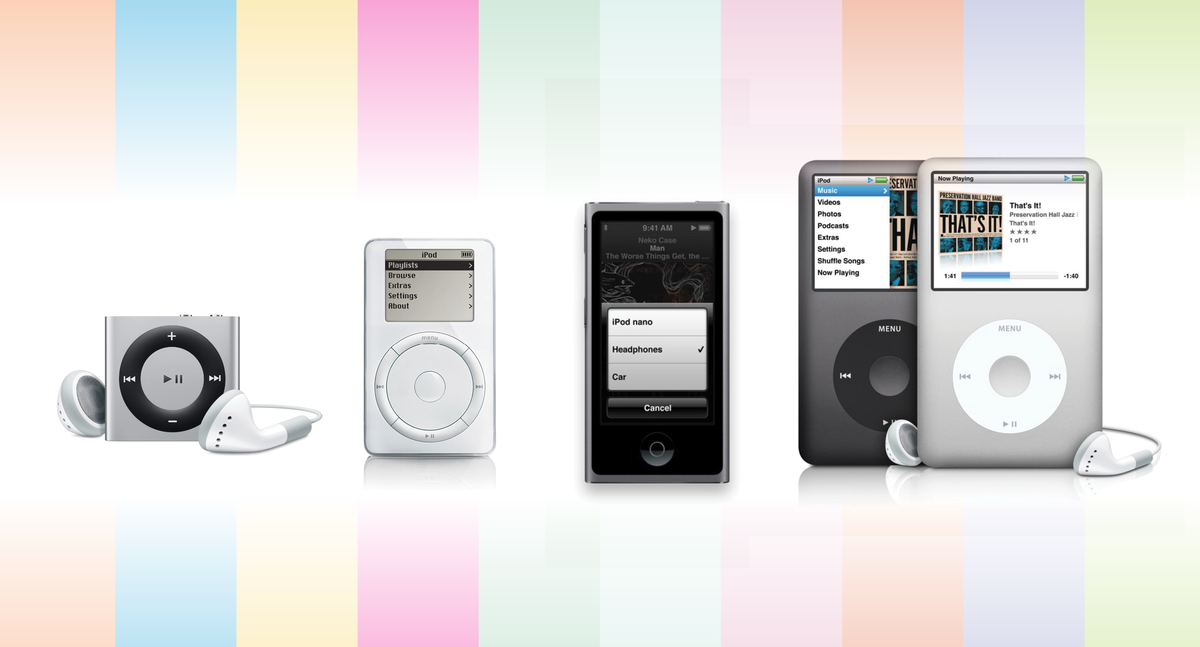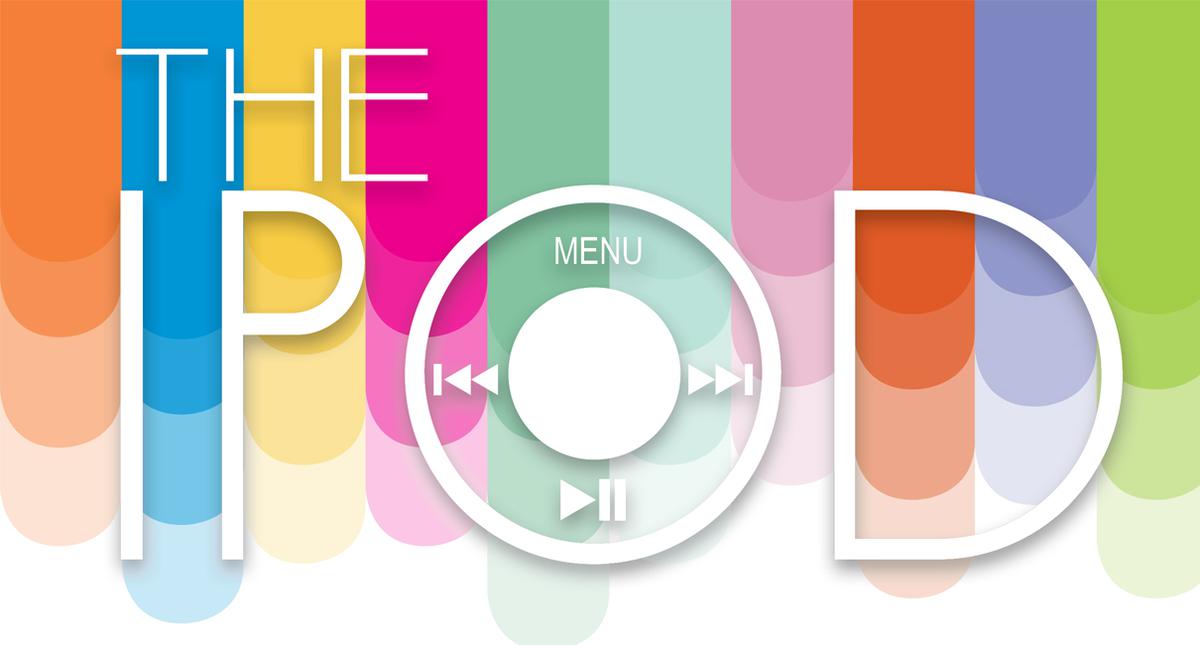Few things are more personal than one’s musical choices. You can tell so much of a person from what they listen to, and from radio, to the various music storage media such as cassettes, the DAT, and CDs (which were a stopgap solution at best), mobile listening has always been high on the list of human priorities. No device changed things so drastically in such a big way in recent history as the iPod. The iPod, with its 5GB hard drive at its launch in 2001, saw meager sales at the beginning, due to its Apple-only compatibility, despite its elegant design and simple, easy-to-use controls particularly when compared against other players at the time. Windows support and the promise of 1,000 songs in your pocket in a gorgeous, elegant device was too much to resist though, and by the time the fourth generation came along, everyone was hooked.

The first iPod, with a mechanical scroll wheel, iconic white earbuds, monochrome display, and separate buttons for track controls was available with either 5 or 10GB of storage, and could play music for 10 hours. This was followed by a 10 and 20GB version, and a new, touch-sensitive clickwheel less than a year after. The third generation iPod, with the clickwheel and track controls just below the screen was replaced in 2004 by the 20 and 40GB version that had all the controls integrated into the clickwheel, to create the final, elegant form of the iPod classic that would stay with us until the end.
More variations, mostly involving the screen, and storage space would continue to come out, with other types being made available concurrently, such as the beautifully colored iPod mini, which would later be replaced with the wonderfully small iPod Nano, which changed from long and rectangular, to short and squat, then back again, before turning into the screen-only touchscreen square in 2010, and finally the 7th generation Nano in 2012. Avid users will also remember the iPod shuffle, with its screen-less design and play and go usability intended for working out.
The iPod revolutionized mobile listening and was responsible for more than a few retired portable CD players. The prospect of not just bringing a few select tracks, but potentially your whole music collection was a great boon for music lovers, but in particular for the casual listeners who just wanted to load up tracks and go. That, plus the fashionable, accessory-like styling made it an instant hit with the lifestyle crowd. Sales of the iPod peaked in 2008 (around the time of the 4th Generation iPod Nano) when portable music players were still the primary way to listen to music on the move. From there, sales began to drop, likely as phones started to better handle music and video playback. While iPods from the third generation Nano could play video as well, it wasn’t the most pleasant experience given the small screens they had. Once phones had proven themselves fully capable music devices in their own right (ironically helped along by the iPhone, which was being sold the whole time), the days of the standalone Apple music player were numbered.
The iPod Classic, sole holdout of the ”true” iPod stable, with a whopping 160GB of storage, was phased out in 2014. It was the end of an era, but in a world where phones could play music on their own, and streaming services plus mobile internet were commonplace, it was a dinosaur, but one we remember fondly. Their spirit lives on in the iPhones we have today, but there’s something about the nostalgia of that hard-drive-based music player, and their iconic white earbuds.
Also published in GADGETS MAGAZINE December 2015-January 2016 Issue
Words by Ren Alcantara
Art by Theresa Eloriaga
